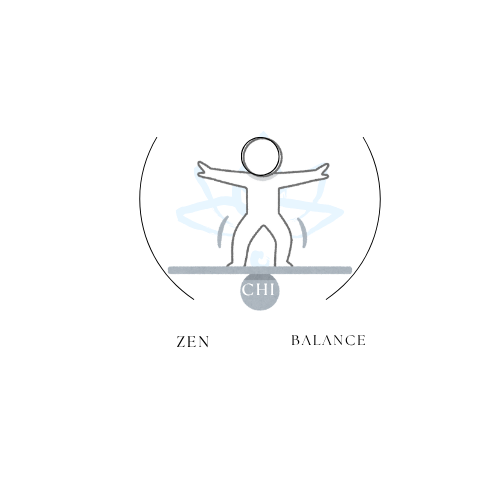
Winding Down Steps for a Quiet Mind and Restful Sleep
Share
Updated on: 2025-10-22
Table of contents for winding down
- Pros and cons of winding down routines
-
Step-by-step practical guide to winding down
- Step 1: Create a gentle transition after work
- Step 2: Soften light and sound for relaxing evenings
- Step 3: Gentle movement to support unwinding
- Step 4: Calm breathing and mindful pauses
- Step 5: Soothing habits in your bedtime routine
- Step 6: Digital boundaries for stress relief
- Step 7: A simple timer to guide winding down
- Step 8: Reflection to close the day
- Wrap-up: winding down with ease and consistency
- Questions and answers about winding down routines
A calm evening begins with winding down in small, steady steps. If your days feel full, you may appreciate a simple approach to unwinding that is realistic, relaxing, and kind to your schedule. This guide focuses on stress relief and an easy bedtime routine you can tailor to your needs. You will find practical ideas for winding down after work tips to relax, as well as a winding down before bed routine for better sleep. The suggestions are gentle and flexible, so you can choose what feels right. The goal is a smoother transition, a softer pace, and a more restful close to the day.
Pros and cons of winding down routines
- Pros: Predictable calm. A consistent winding down routine sets a reliable cue that your day is ending. Over time, this steady rhythm can feel more natural and supportive.
- Pros: Less evening overwhelm. Small steps—like dimming lights and quiet time—may help your mind and body ease into relaxing mode without pressure.
- Pros: Gentle stress relief. Light movement, mindful breathing, or simple journaling can offer a soothing channel for lingering tension.
- Pros: Flexible for any schedule. Winding down does not need to be long. You can start with brief rituals and add more when you have the time.
- Cons: Requires consistency. It can be easy to skip the routine on busy evenings. A short, forgiving plan helps you keep going.
- Cons: Trial and adjustment. Not every step will fit your preferences. It may take a little time to find the most relaxing mix.
- Cons: Environment limits. Bright spaces, noise, or shared homes may need small workarounds, like soft music or a cozy corner.
Step-by-step practical guide to winding down
This simple guide is designed to help you start relaxing earlier, move through your evening with ease, and arrive at your bedtime routine feeling settled. You can follow the steps in order or pick a few that suit you today.
Step 1: Create a gentle transition after work
Begin unwinding with a short transition that marks the end of your day. You might change into comfortable clothes, wash your hands or face, or step outside for a few breaths of fresh air. This small shift signals that you are moving from doing to being. If it helps, set a kind reminder on your phone that says “Time to slow down.” This is not about strict rules. It is about giving yourself permission to shift gears with care.
Step 2: Soften light and sound for relaxing evenings
Lighting and sound shape how calm a space feels. Try dimming overhead lights and using warm lamps. Keep music gentle and steady, or enjoy a few minutes of quiet. These tiny changes can support relaxing energy at home. If a quieter environment feels out of reach, noise-softening options such as soft playlists or simple white noise may be helpful. Your aim is a space that encourages unwinding without effort.
Step 3: Gentle movement to support unwinding
Light stretching, a brief walk, or a few easy yoga poses can help release the day’s stiffness. Keep movements slow and comfortable. You might roll your shoulders, reach your arms overhead, or try a relaxed forward fold. If you enjoy guidance, you can explore calm ideas on the Blog and adjust any routine to fit your energy.
Step 4: Calm breathing and mindful pauses
A few minutes of calm breathing can be a kind anchor for unwinding. You might try a slow inhale through your nose and a longer, gentle exhale through your mouth. If counting feels supportive, you could breathe in for four and out for six, or simply follow a natural rhythm. If you prefer, sit quietly with your eyes open and notice sounds, textures, or light. These mindful pauses can help you settle in a way that feels soft and steady.
Step 5: Soothing habits in your bedtime routine
Choose simple, enjoyable habits that make your bedtime routine feel inviting. A warm bath or shower, light reading, or a short journal note can be comforting. Keep the content of any reading peaceful and the lighting gentle. A cozy blanket, tidy bedside area, and a glass of water may add to your sense of ease. If you like to explore calming tools or accessories, the Collections page may offer ideas for creating a restful corner.
Step 6: Digital boundaries for stress relief
It can feel kind to your attention to reduce screen time as the evening goes on. You might lower screen brightness, switch to a softer color mode, or set a quiet period for notifications. If a complete pause is not possible, try moving conversations or tasks that feel stimulating earlier in the evening. A gentle boundary can offer meaningful stress relief, and it becomes easier with practice.
Step 7: A simple timer to guide winding down
Many people find a soft structure reassuring. Consider a short timer for your winding down routine—perhaps 10 to 30 minutes, depending on the day. You can divide it into two or three phases: light movement, calm breathing, and a quiet activity like reading. Treat the timer as guidance rather than a rule. If your evening runs long, even five minutes of presence can support a calmer night.
Step 8: Reflection to close the day
Before bed, take a brief moment to reflect. You might write one thing you appreciated, one thing you learned, or one simple intention for tomorrow. Keeping reflection concise makes it easier to continue. If you prefer conversation, share a few kind words with a partner, a friend, or yourself. End the day with gentleness. It sets the tone for a caring tomorrow.
Wrap-up: winding down with ease and consistency
Winding down works best when it is kind, flexible, and easy to repeat. A short transition after work, lighter evenings, and a cozy bedtime routine can help you feel more relaxed. The aim is a routine that supports unwinding without pressure. You can start small and make changes as you learn what feels most natural. If you would like more inspiration, you can visit the About page to learn more about our calm-first approach or explore new ideas on the Blog. If you have questions or would value a friendly point of view, the Contact page is open and welcoming.
Questions and answers about winding down routines
What are effective ways to start winding down before bed?
It can help to begin with one simple cue that signals the start of your bedtime routine. Dimming lights, changing into comfortable clothes, and putting your phone on a gentle setting are small actions that feel clear and doable. Follow that with a short, relaxing activity—light reading, calm breathing, or a warm bath. These steps support unwinding without adding complexity. If your schedule varies, choose one anchor you can keep most nights, such as five minutes of quiet breathing in the same cozy spot.
How long should a winding down routine take at night?
A winding down routine can be brief and still meaningful. Many people like a range between 10 and 40 minutes, but there is no fixed rule. On busy evenings, five minutes of mindful breathing and soft lighting can feel helpful. On spacious evenings, you might enjoy a longer sequence with gentle stretching, journaling, or a soothing bath. The best length is the one you can maintain with ease. Think of it as a flexible window, not a strict schedule.
What helps with unwinding after work for stress relief?
Try a two-part approach: a clear transition and a calming ritual. A transition could be a short walk, changing clothes, or a glass of water enjoyed without multitasking. Then choose a calming ritual you look forward to—music at low volume, a simple stretch, or sitting by a window for a few quiet minutes. This pairing supports stress relief by marking the end of the workday and giving your attention a softer focus. If you want fresh ideas across the seasons, check the Blog for gentle routines you can adapt.
How do I keep a relaxing bedtime routine on busy days?
Keep a “minimum version” ready. Choose two easy steps you can do almost anywhere, such as dimming lights and three rounds of slow breathing. This keeps the habit alive and reduces decision fatigue. When time allows, add a third step like light stretching or reading. A bookmark, a soft lamp, or a favorite playlist can make it simple to resume the full routine on calmer days. Consistency matters more than length, so be kind to yourself and let the routine scale with your day.

I'm a passionate curator at Zen Chi Balance, dedicated to spreading calm, harmony, and mindful living through faith-inspired lifestyle products. I help craft meaningful experiences for our global community of mindful shoppers.
The content provided is for informational and inspirational purposes only. It is intended to encourage personal growth, mindfulness, and balance in daily life. Zen Chi Balance does not provide medical, legal, or professional advice. For specific concerns or guidance, please consult a qualified professional. Visit us at www.zenchibalance.com for more inspiration and resources.
